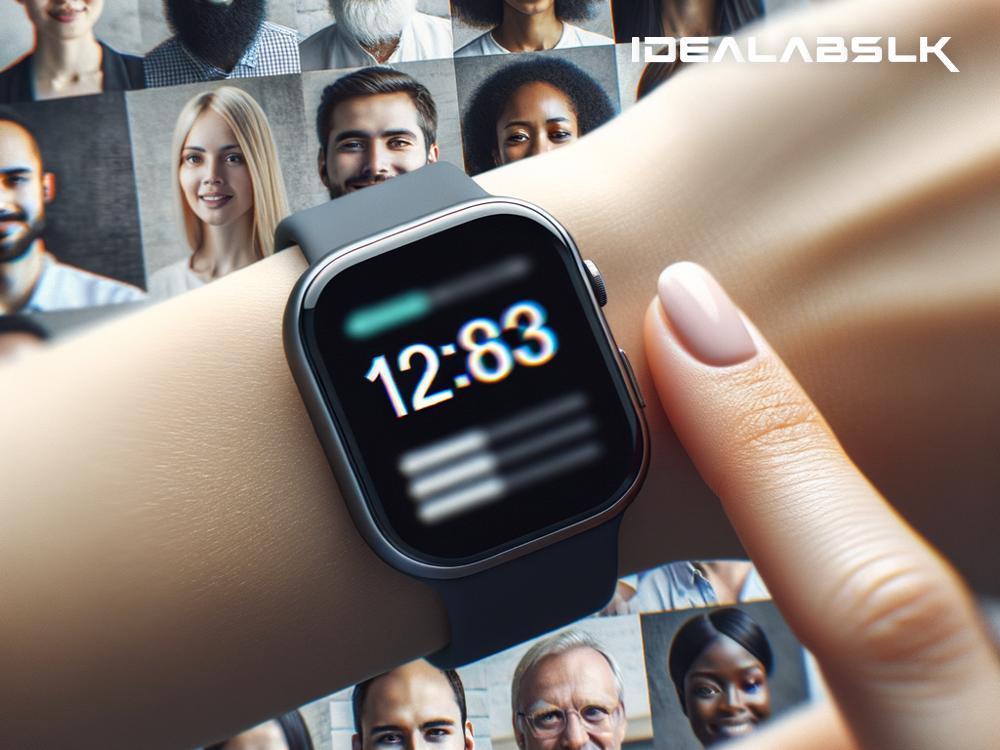How AI Is Making Wearable Devices More Accessible for Everyone
In today's fast-paced world, technology is a constant companion for many of us. Wearable devices, like smartwatches and fitness trackers, have become an integral part of our daily lives. They help us stay connected, track our health, and even navigate the world around us. But what about people with disabilities? That's where Artificial Intelligence (AI) comes in, revolutionizing the way accessibility features are integrated into wearable devices, making them more inclusive for everyone.
Breaking Down Barriers with AI
Imagine trying to read a notification on a smartwatch, but the text is too small. Or consider the challenges faced by a person who is deaf when a device only provides audio cues. These are just a couple of examples where traditional wearable devices can fall short in catering to the needs of people with disabilities. Thankfully, AI is breaking down these barriers, taking accessibility to a whole new level.
How AI Works Magic
AI, at its core, is all about teaching computers to learn from and interpret data in a way that mimics human intelligence. This capability is being harnessed to create adaptive features in wearable devices that can understand and adjust to the unique needs of each user.
1. Enhanced Visuals with AI
For those with visual impairments, AI-powered wearable devices can automatically adjust the size of the text based on the user's preference or the context in which it's being read. But it doesn't stop there. AI can also describe images or translate text into speech, making information accessible in the form of audio for those who find it challenging to see.
2. Hearing Aids Get Smarter
AI is transforming hearing aids into highly sophisticated devices. They can now filter out background noise in real-time, making it easier for people with hearing impairments to focus on conversations. Additionally, some AI-driven wearable devices can convert spoken words into text displayed on a screen, a feature that's incredibly helpful in noisy environments.
3. Navigating the World with Ease
For individuals with mobility challenges or visual impairments, navigating through public spaces can be daunting. AI-enabled wearable devices can provide real-time audio cues or vibrations to guide users around obstacles, making it safer and easier to explore the world independently.
4. Monitoring Health Like Never Before
AI doesn't just stop at enhancing the basic accessibility features. It's also revolutionizing how wearable devices monitor health. By learning from vast amounts of data, AI can detect irregular patterns in a user's health metrics, potentially identifying issues before they become serious. For people with chronic conditions or disabilities, this can be a game-changer, offering peace of mind and encouraging proactive healthcare.
The Future is Accessible
The integration of AI into wearable devices is just beginning, but it's clear that the potential is enormous. As technology evolves, we can expect these devices to become even more intuitive and adaptive, catering to a wider range of needs and making technology accessible to all.
Embracing Inclusivity
The drive towards more accessible technology isn't just about compliance with regulations or ticking boxes. It's about acknowledging the diverse needs of the global population and embracing inclusivity. By leveraging AI, manufacturers of wearable devices are paving the way for a future where technology empowers everyone, regardless of their abilities.
Challenges and Opportunities
Despite the promising advances, there are still challenges to overcome. Ensuring privacy and security, especially with devices that collect and process sensitive health data, is paramount. Moreover, as AI systems require vast amounts of data to learn and improve, there's a need to ensure that this data is representative of the diverse needs and challenges faced by people with disabilities. Addressing these challenges is critical to unlocking the full potential of AI in making wearable devices more accessible to everyone.
Conclusion
The integration of AI into wearable devices is transforming accessibility, making technology more inclusive and empowering individuals with disabilities like never before. As we look to the future, the continued evolution of AI promises not only to enhance the functionality of these devices but also to shape a world where technology truly serves everyone's needs. Let's embrace this journey towards a more accessible and inclusive technological landscape together.

